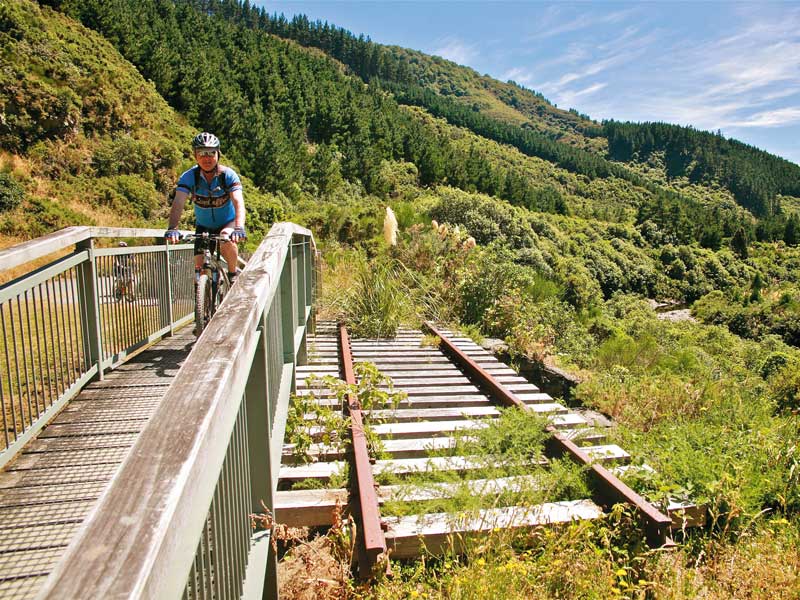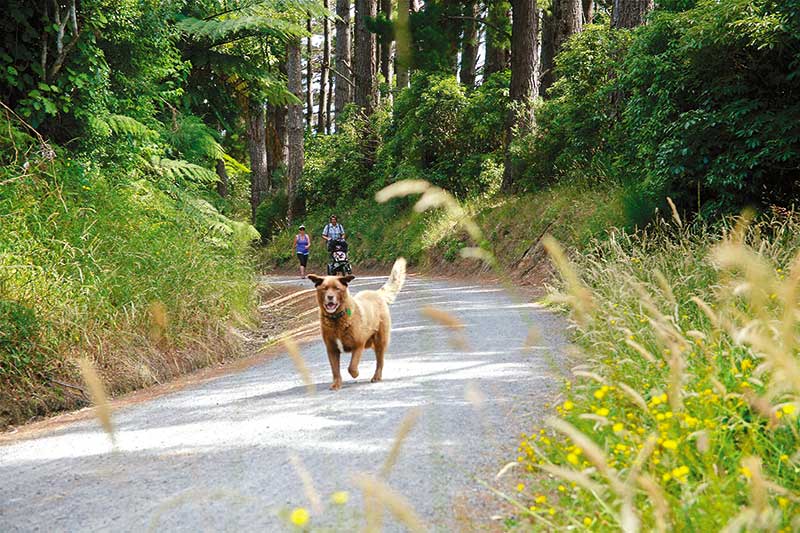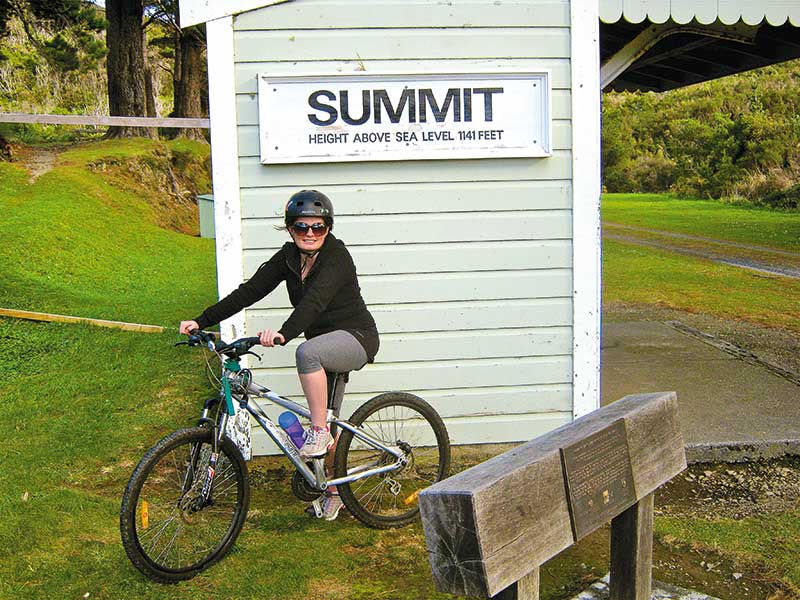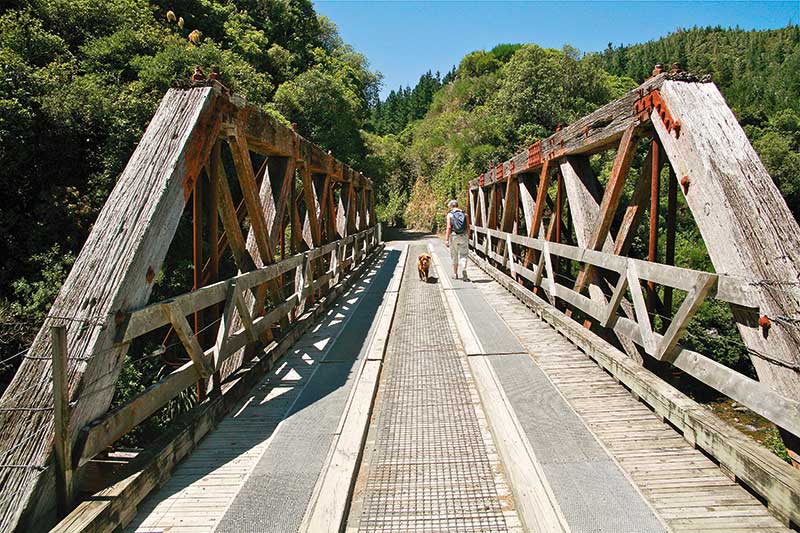For 77 years until its closure in 1955, the Rimutaka Incline formed part of the main Wellington-Masterton rail link, a train journey of 18 kilometres that provided its passengers with an unforgettable, if not slow, experience.
Now relegated to history, all that remains is the formed track bed – now recycled into the Rimutaka Rail Trail.
A gently graded walk or mountain bike ride, the trail features restored railway bridges and four tunnels, and can be accessed from either Cross Creek in the Wairarapa or Kaitoke near Upper Hutt. Ideally you should tackle the trail on a mountain bike. This allows you to experience the entire journey with a return back to the Kaitoke entrance, or vice versa.
I decided to walk part of the trail with my family to a picnic area at Ladle Bend, returning later that afternoon. It was a long day, especially for my two-year-old granddaughter (and she spent most of the time in a stroller).
This particular rail trail has been named one of the world’s hottest travel experiences for 2015 by Lonely Planet. That combination was enough for me to head for the Pakuratahi Forest on a brilliant blue-sky Wellington day.
The walk began at the Kaitoki entrance where there are information boards outlining the history of the railway. On one of the boards I noticed a photo of a young Queen Elizabeth who apparently visited here during the 1953 royal tour. A good start to the walk, I thought. Nothing like a royal seal of approval.
Once through the white stiles it is a pleasant walk for the next two kilometres along a gently graded road-like track bordered by pine trees. Once past the NZ Deerstalkers Association rifle range the first railway feature is Munitions Bend. You have two choices here: walk over the new footbridge built on the original piers or slosh through the creek running across the track.
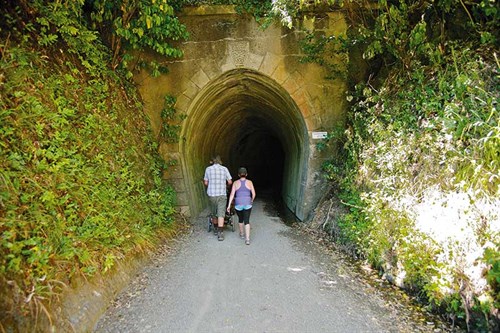
Pushing a stroller with a two year old, you can probably guess which one I chose. Beside the foot bridge there is a piece of railway track, I assume it was salvaged from the original bridge.
Pressing on with the Pakurangi River now clearly visible below the winding track, we reached our second feature the southern portal of a tunnel bearing the same name. At this point there was no doubt in my mind that we were walking along the remains of an historic railway line.
Constructed from 13,000 plus concrete blocks made on-site, the ornate portal entrance was beautiful, an example of the skill of stonemasons from another era. The keystone at the top of the portal was exceptionally crafted, the detail almost cathedral like.
At the tunnel exit there is a ventilation shaft that clears diesel fumes from the Rimutaka Tunnel directly below us. The completion of this tunnel in 1955 sounded the death knell for the incline. In one of those rare ‘in the right place at the right time’ moments we heard a train pass under us, the distinctive sound of a diesel locomotive and passenger carriages echoing up through the shaft.
Ten minutes later we reached an historic Howe-style truss bridge dating from 1910 – it’s the oldest truss bridge in New Zealand, according to the information panel.
The track then passes through a series of railway embankments that still look as fresh as they were when the railway tracks were there. At the end of a long curve we reached the Ladle Bend Creek Bridge, a new structure built on top of the original stone abutments. Looking back from here you could see the mountain bikers approaching that by now were passing us in large numbers.
It was a glorious day; whether you like trains or not the combination of walking the actual route and viewing one of the restored locomotives in a museum, the Rimutaka Incline experience is a day well spent.
Read the full article in issue #133 of Motorhomes Caravans & Destinations magazine (on sale now!). Subscribe here.

